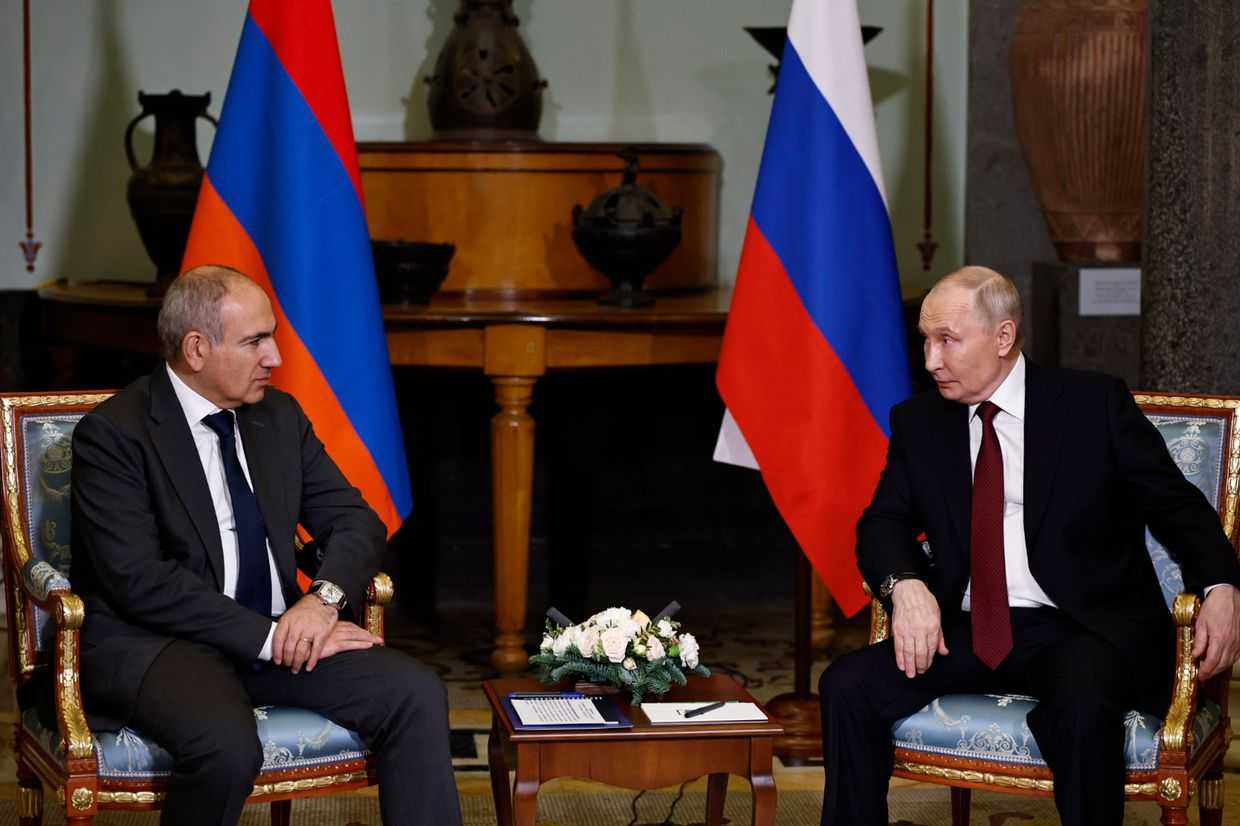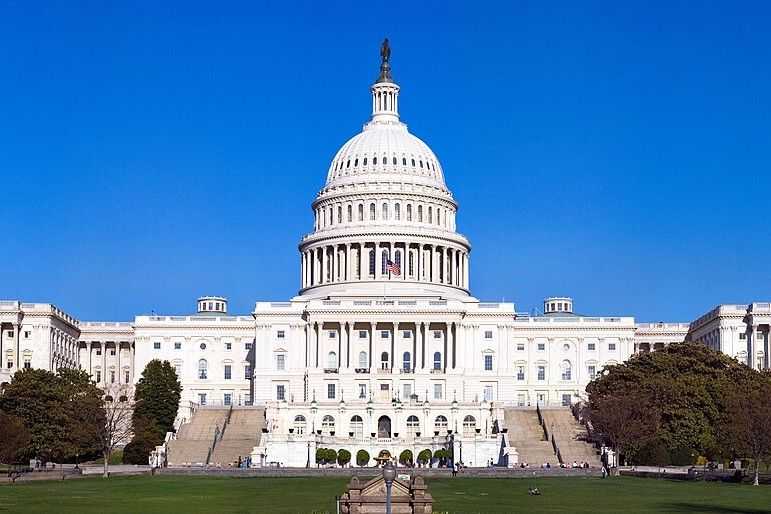
Yerevan’s long-running alliance with Moscow has become increasingly meaningless, as evidenced by Russia’s inaction in the recent conflict. However, it is unclear what alternatives are available to Armenia.
Following Azerbaijani attacks on Armenia on 13 September, all that the President of Russia, Vladimir Putin had to say was that ‘any conflict between states close to us causes us serious concern’. While this was in line with the expressions of ‘deep concern’ offered by international bodies, to Armenians, his words and actions were acutely insufficient.
Armenia has a bilateral defensive pact with Russia, and is also a member of the Collective Security Treaty Organisation (CSTO) — a NATO-like military alliance between six post-Soviet states including Russia. Article 4 of the CSTO treaty states that an attack on one member will be considered an attack on all, and obligates members to provide military support.
Given this context, Armenians had understandably hoped for something a bit more substantial as Azerbaijan, for the first time in the post-Soviet history of the two countries, attacked Armenia within its internationally recognised borders — capturing territories, shelling 36 settlements, and leaving 207 Armenian soldiers dead or missing.
But Putin’s mild words and refusal to name the aggressor in a conflict that cost around 300 hundred lives from across the two countries was very consistent with Russia and the CSTO’s history of activity in the partnership.
Despite the country’s two-fold commitment to providing military assistance to Armenia, all that it actually offered was recommendations to Armenia for how the situation might be ‘normalised’, the promise that the CSTO would dispatch a fact-finding mission, and, of course, its expressions of ‘serious concern’.
Reaching breaking point
For many Armenians, this was the last straw. Both the government and population broke with protocol, and began to publicly call out the shortcomings of their main ‘strategic ally’ — an ally that appears to do nothing that would merit the title.
The Secretary of the Security Council stated that Yerevan had ‘no hope’ of the CSTO providing military assistance to Armenia, while Armenians took to the streets to protest.
In mirror image to Russia’s inaction, the United States showed unprecedented and unexpected engagement in the conflict. It was the US that mediated the ceasefire, the US Secretary of State Antony Blinken who kept in touch with the leaders of Azerbaijan and Armenia in the tense days following the ceasefire, and finally, Blinken again who organised the first meeting between the foreign ministers of the two countries, less than a week after the fighting broke out.
Arguably equally notable was the visit of US House Speaker Nancy Pelosi — the third highest-ranking official in the United States — to Yerevan, mere days after the clashes.
US involvement in the conflict gave many Armenians and foreign commentators hope that a historic change in Armenia’s foreign policy was imminent. Some went so far as to suggest that Armenia should join NATO and the EU, and so reject alliance with Russia once and for all.
Such hopes of a swift turn away from Russian alliance are understandable, but unlikely to materialise anytime soon. Even if it does take place, such a shift is unlikely to be entirely positive for Armenia, as the country carries the legacy of thirty years of Russian colonisation.
200 years of Russian troops
While anger at Russia has risen to levels not seen in Armenia in living memory, with several anti-Russian and anti-CSTO protests taking place following the war, untangling the country’s tight ties with Moscow is likely to prove painful at best.
Fully severing ties with Russia would mean getting rid of Russian troops stationed in Armenia — a military presence that has persisted in the country for over two centuries.
First settling in Armenia in the 19th century, Russian troops did not leave the country following the collapse of the Soviet Union, unlike in other countries in the South Caucasus. At the end of 1993, around 9,000 Russian troops were stationed in Armenian military bases.
In 2022, the numbers remain much the same: Russia has at least 10,000 soldiers within Armenia’s internationally recognised borders, which includes roughly 4,500 border guards and around 5,000 troops in Gyumri.
The border guards are mostly stationed along the Armenia–Turkey and Armenia–Iran borders, which span a total of 375 kilometres. The remaining 5,000 operate out of the Kremlin’s military base in Gyumri, which has permission to be stationed in Armenia for at least 22 more years with the possibility of further extension.
Were Russian troops to withdraw from Armenia, the Armenia–Turkey border would be left unprotected. The Armenian army, significantly weakened since the 2020 war, would have huge challenges manning the borders while remaining ready to handle the real risk of border conflicts with Azerbaijan or even large-scale war.
Needless to say, if Armenia were to request that Russian troops leave without having an international security ally, events could end tragically for the country. Taking into account Armenia’s additional economic dependence on Russia, the decision of whether to maintain close ties with its partner state is not one that Armenia can make freely.
Keeping the peace in Nagorno-Karabakh
When the Second Nagorno-Karabakh War took place in 2020, Western countries maintained a typically polite distance from the conflict, taking no active involvement in ending the conflict or normalising relations between the two countries. This gave Russia ample room to act as the key mediator, and take on the role of ‘saviour’ of the Armenian population of Nagorno-Karabakh. In doing so, Russia also secured its presence in the only post-Soviet conflict it did not yet have its boots in, by deploying over 2,000 peacekeepers to the region.
Following the post-conflict withdrawal of the Armenian army from the contested region, Russian troops became the only guarantor of the security of over 120,000 Armenians living in Nagorno-Karabakh. However, the already limited Armenian forces, further weakened following the war, have continued to protect Nagorno-Karabakh’s borders with Azerbaijan and fought in several clashes following 2020, with little to no support from the peacekeepers.
While the presence of Russian troops following the 2020 ceasefire has not prevented hostilities from erupting in Nagorno-Karabakh, nor prevented Azerbaijan from taking control of three settlements that were supposed to be under Russian control, the presence of Russian troops is still understood to be vital for the safety of the local Armenian population.
Nonetheless, there was a distinct shift in mood in the region following the most recent attacks, with Russia’s inaction adding to growing doubts regarding the role the country plays in the region.
In response, Arayik Harutyunyan, President of Nagorno-Karabakh, called anti-Russian sentiments the propaganda of foreign forces, and expressed his hope that the Russian troops would remain in the region for as long as possible.
Since long before its troops were stationed in Nagorno-Karabakh, Russia has been using the conflict as leverage to extend its influence over Armenia and its policies. While it was seen as Armenia’s key ally against Azerbaijan, Armenia and Russia’s views on conflict resolution have not always aligned. This difference in approach had become more notable following the Second Nagorno-Karabakh War. Now, in light of Russia’s failure to take any action in Armenia’s interests in the September conflicts, the countries appear to be working from entirely different playbooks.
Economic dependence
Russia’s military leverage in Armenia is already enough to make it incredibly difficult for the Armenian state to change its foreign policy alignment. On top of this, the Armenian economy is tightly bound to the Russian market and state.
Armenia and Russia have strong economic ties, both bilateral and multilateral, the latter within the Russia-led Eurasian Economic Union (EAEU). Back in 2013, despite having initially been passionate about the possibility of an Association Agreement with the European Union (EU), Armenia instead decided to join the EAEU, effectively closing the door on any further integration with the EU. The current Comprehensive and Enhanced Partnership Agreement (CEPA) between Armenia and the EU is the highest level of cooperation accessible to Armenia as long as it remains part of the EAEU.
Despite limited diversification of Armenia’s trade in recent years, Russia is still the largest importer and exporter of goods to and from Armenia; diversifying trade would require significant changes to the Armenian economy.
And last but not least, the Russian state and business have shares in almost every sector central to Armenia’s economy and infrastructure: gas, electricity, railroads, and nuclear power plants. Names of Russian businessmen can also be found amongst the shareholders of Armenia’s largest mining companies, the largest and most developed field of industry in Armenia.
The situation that Armenia now finds itself in is the result of the Armenian government’s decisions in the past three decades of independence, and Russia’s process of deliberate colonial creep.
It may look like Armenia now has a historic opportunity to look West and find partners who will deliver on their commitments, but the situation is fraught with risk. Any reckless decisions by the Armenian government could be not just damaging, but suicidal for Armenia and the Armenian population of Nagorno-Karabakh.








